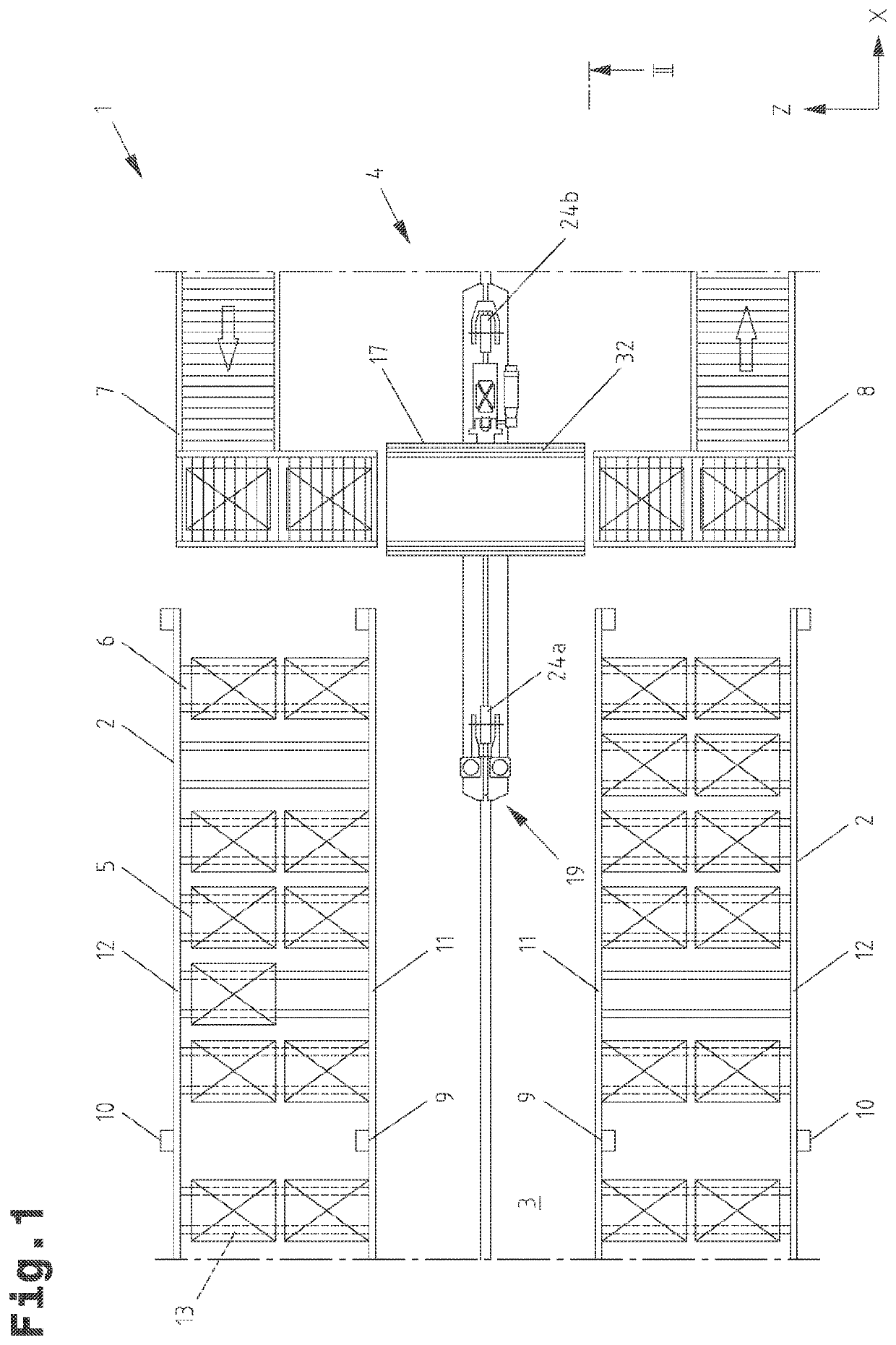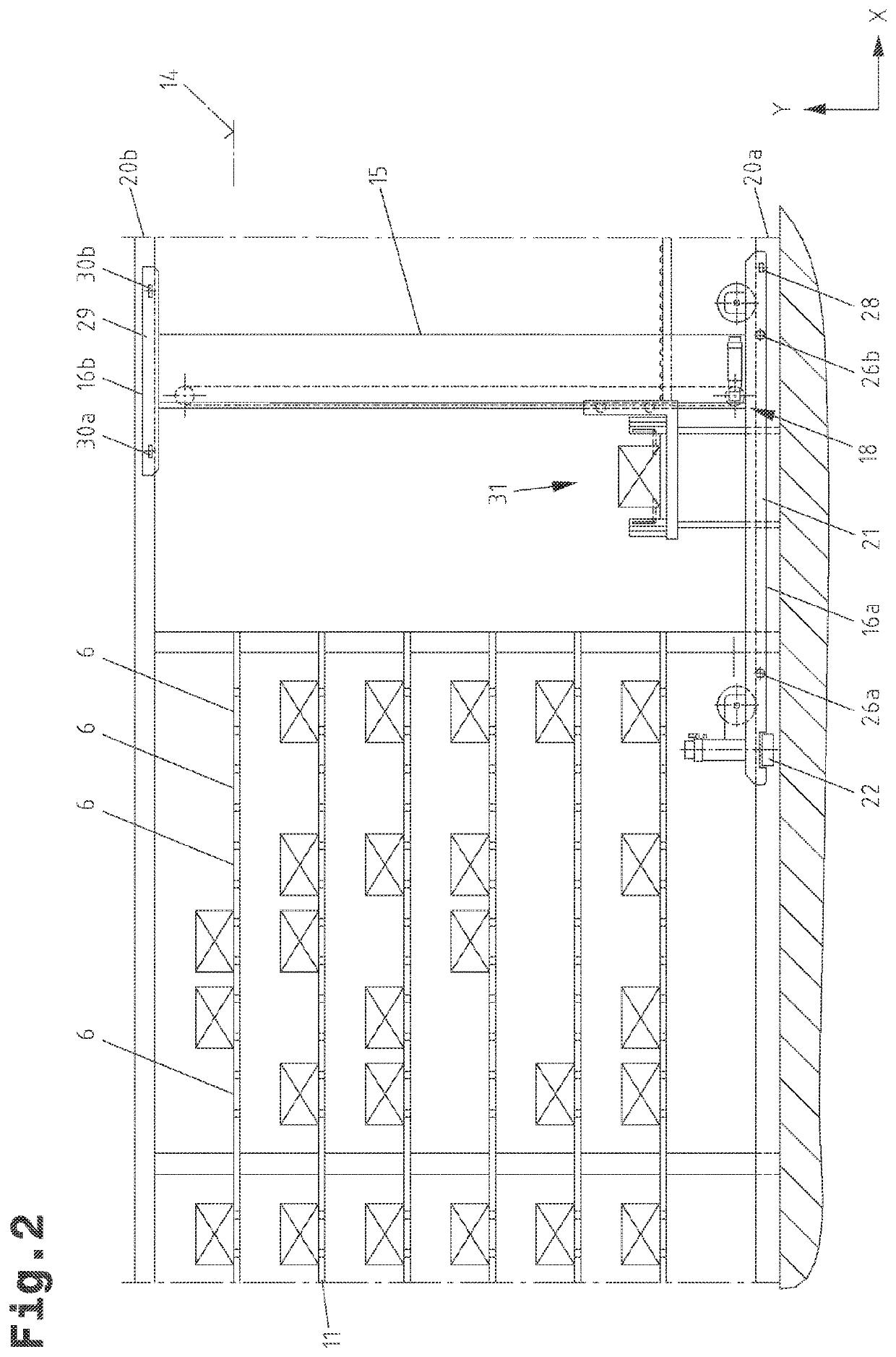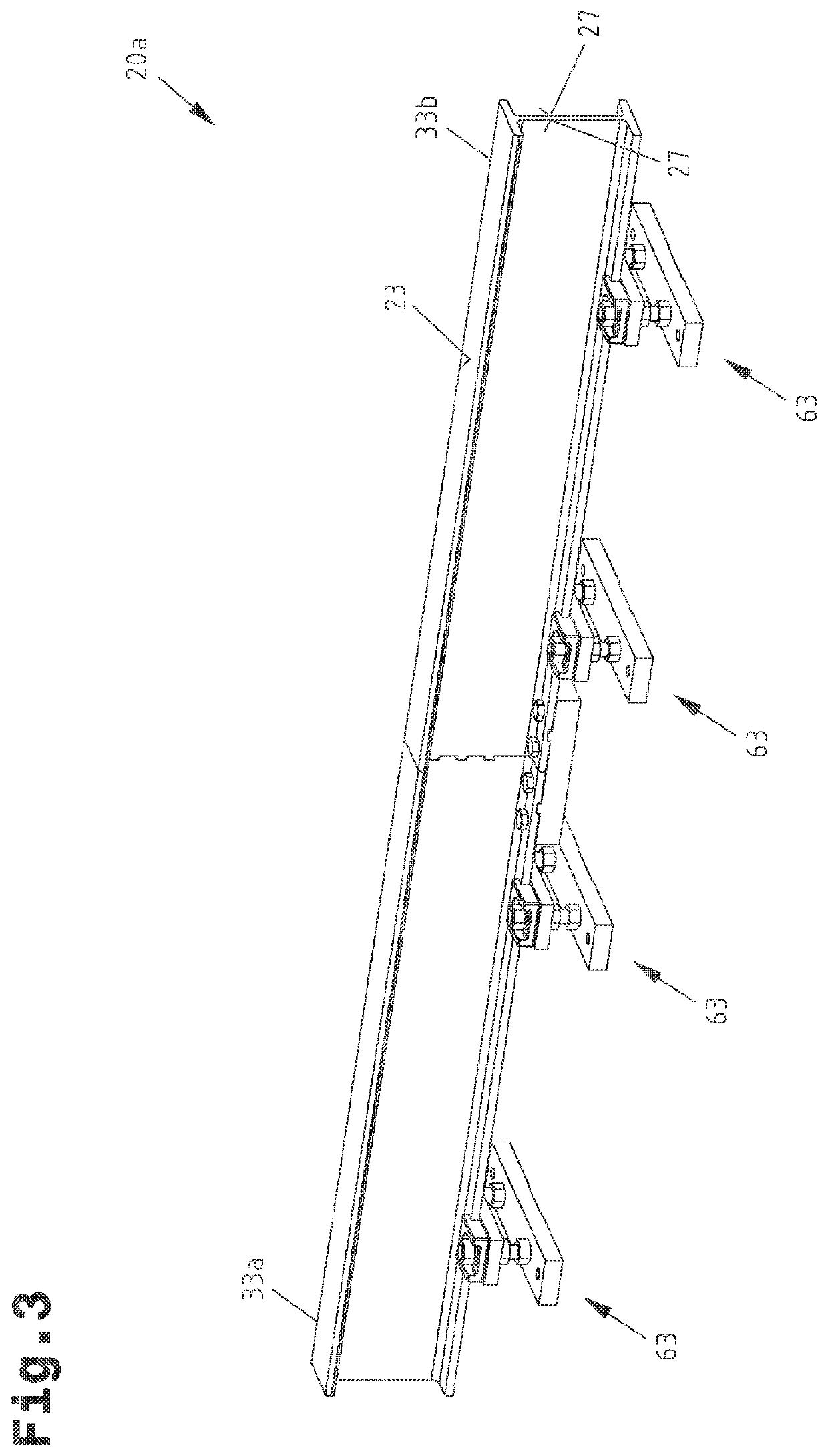Rail system for a conveying vehicle and storage system
a technology for conveying vehicles and rail systems, applied in storage devices, roads, constructions, etc., can solve problems such as unnecessary machining of running-rail connections
- Summary
- Abstract
- Description
- Claims
- Application Information
AI Technical Summary
Benefits of technology
Problems solved by technology
Method used
Image
Examples
first embodiment
[0060]In FIGS. 3 to 10, the rail system is shown, especially the lower rail system 20a, wherein fastening devices 63 to be described in still more detail are illustrated exclusively in 3 and 4.
[0061]The rail system 20a comprises a first running rail 33a, a second running rail 33b and a connecting device 34. The connecting device 34 has at least one interlocking connection between the ends 35a, 35b, directed toward one another, of the first running rail 33a and second running rail 33b. At its end 35a, the first running rail 33a forms a first interlocking element 36a and a first surface portion 37a. The first surface portion 37a is shown in shaded manner in FIG. 8. The end 35a extends in a cross-sectional plane perpendicular to the longitudinal extent of the first running rail 33a. At its end 35b, the second running rail 33b forms a second interlocking element 36b and a second surface portion 37b. The second surface portion 37b is shown in shaded manner in FIG. 9. The end 35b extends ...
second embodiment
[0086]In FIGS. 11 to 13, described together, a rail system, especially the upper rail system 20b, which uses a similarly designed connecting device 56, is described in more detail.
[0087]The upper rail system 20b comprises a first running rail 55a, a second running rail 55b and a connecting device 56. The first running rail 55a and second running rail 55b form at least one guide track, which extends in longitudinal direction of the rail system 20b and along which one or more running wheels 30a, 30b of the conveyor vehicle 4 bear in rolling relationship. According to the shown embodiment, the running rails 55a, 55b are respectively formed by a flat profile 57, which has guide tracks 58 lying opposite one another.
[0088]As is apparent in the figures, the first surface portion 37a extends in a cross-sectional plane perpendicular to the first running rail 55a and the second surface portion 37b extends in a cross-sectional plane perpendicular to the second running rail 55b. The first surfa...
PUM
 Login to View More
Login to View More Abstract
Description
Claims
Application Information
 Login to View More
Login to View More - R&D
- Intellectual Property
- Life Sciences
- Materials
- Tech Scout
- Unparalleled Data Quality
- Higher Quality Content
- 60% Fewer Hallucinations
Browse by: Latest US Patents, China's latest patents, Technical Efficacy Thesaurus, Application Domain, Technology Topic, Popular Technical Reports.
© 2025 PatSnap. All rights reserved.Legal|Privacy policy|Modern Slavery Act Transparency Statement|Sitemap|About US| Contact US: help@patsnap.com



